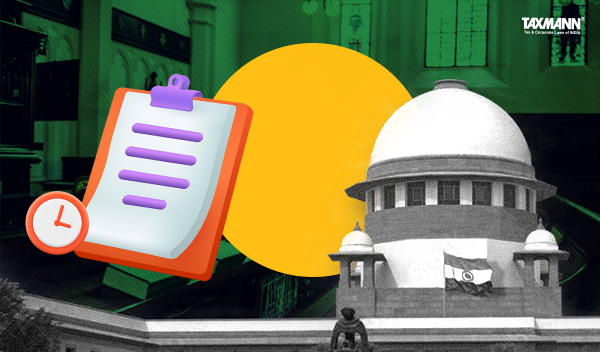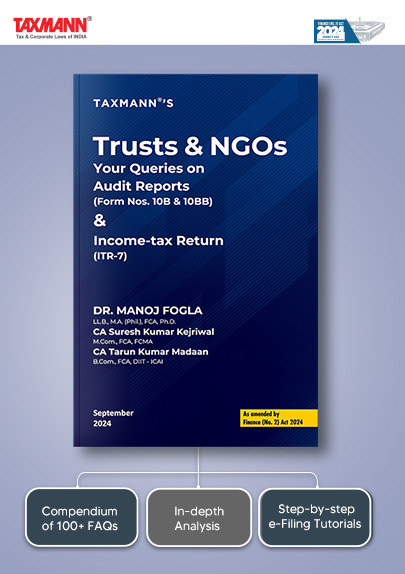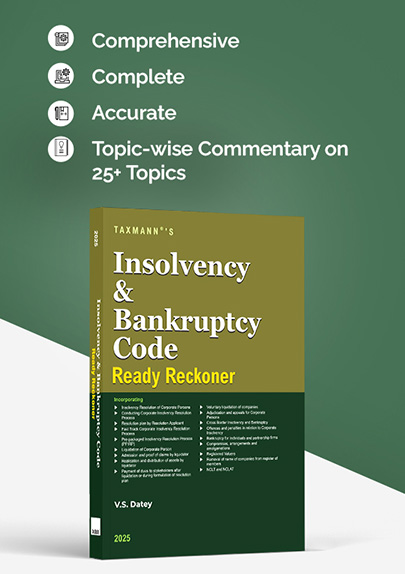Limitation Period for Reassessment Can’t Be Extended Due to Proceedings From Writ Petition Orders | HC
- Blog|News|Income Tax|
- 2 Min Read
- By Taxmann
- |
- Last Updated on 15 February, 2025
Case Details: Abhinav Jindal vs. Assistant Commissioner of Income-tax - [2025] 171 taxmann.com 217 (Delhi)
Judiciary and Counsel Details
- Vibhu Bakhru, ACTG. CJ & Tushar Rao Gedela, J.
-
Dr. Kapil Goel & Sandeep Goel, Advs. for the Petitioner.
-
Sanjay Kumar, SSC, Ms Monica Benjamin & Ms Easha Kadian, JSCs for the Respondent.
Facts of the Case
The Assessing Officer (AO) issued a notice under section 148 against the assessee. The assessee filed a writ petition challenging the said notice, and the operation of the said notice was stayed.
AO subsequently issued a notice under section 148A(b) and passed an order under section 148A(d). Later, he issued a notice under section 148. The assessee filed a writ petition challenging the said notice on the ground that the same was issued beyond the period of limitation.
The revenue contended that the impugned notices and order should be considered within the specified time as in the earlier round, the High Court had stayed the proceedings, and the time period during which the said petition was pending before the High Court was required to be excluded for computing limitation.
High Court Held
The Delhi High Court held that the notice under section 148 could have been issued for six years from the end of the relevant assessment year. The fact that the assessee had succeeded in its challenge to the said notice cannot be a ground for exclusion of the period spent by the assessee in pursuing the said litigation.
The time spent by the assessee in pursuing the challenge can neither be excluded nor claimed as resulting in the extension of the period of limitation. The AO is required to take all necessary steps to initiate the assessment proceedings within the period of limitation. This would obviously mean proper steps in accordance with the law. The fact that the AO had not taken the steps in accordance with the law cannot possibly be construed as a factor in favour of the AO for extending the limitation as stipulated under section 149.
List of Cases Referred to
- Ors. v. Ashish Agarwal: (2023) 1 SCC 617 (para 6).
Disclaimer: The content/information published on the website is only for general information of the user and shall not be construed as legal advice. While the Taxmann has exercised reasonable efforts to ensure the veracity of information/content published, Taxmann shall be under no liability in any manner whatsoever for incorrect information, if any.

Taxmann Publications has a dedicated in-house Research & Editorial Team. This team consists of a team of Chartered Accountants, Company Secretaries, and Lawyers. This team works under the guidance and supervision of editor-in-chief Mr Rakesh Bhargava.
The Research and Editorial Team is responsible for developing reliable and accurate content for the readers. The team follows the six-sigma approach to achieve the benchmark of zero error in its publications and research platforms. The team ensures that the following publication guidelines are thoroughly followed while developing the content:
- The statutory material is obtained only from the authorized and reliable sources
- All the latest developments in the judicial and legislative fields are covered
- Prepare the analytical write-ups on current, controversial, and important issues to help the readers to understand the concept and its implications
- Every content published by Taxmann is complete, accurate and lucid
- All evidence-based statements are supported with proper reference to Section, Circular No., Notification No. or citations
- The golden rules of grammar, style and consistency are thoroughly followed
- Font and size that’s easy to read and remain consistent across all imprint and digital publications are applied






 CA | CS | CMA
CA | CS | CMA


